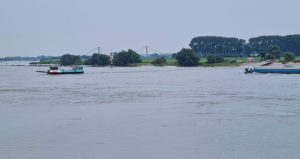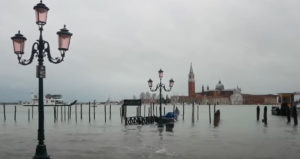What went wrong during the floods in Valencia?

-
 Esther Rasenberg
Esther Rasenberg
Share article:
The natural disaster that occurred in Valencia at the end of October has left the area like a war zone. Many people lost their lives, houses are demolished, and the infrastructure has been completely washed away in many villages. Delayed alerts, a lack of public awareness and inadequate urban planning aggravated the situation. It will take months to clean, repair and renovate the damages.
Over 24 hours on Tuesday the 29th of October fell 445 litres of rain per square meter. The weather event DANA caused devastating floods even in villages where it did not rain at all. The morning of the floods in Valencia the 29th of October the national meteorological agency (AEMET) issued Code Red to indicate severe weather risks. However, civil protection services did not disseminate mobile alerts instructing residents to seek safety on second or third floors until after 8 pm, hours after the floodings. Many residents were surprised by the devastating water in their houses, cars and in underground car parks. They had no time to prepare or evacuate.
Early warning can prevent casualties
This summer during the floods in Central Europe there were also extreme amounts of rainfall. About 200 litres in 24 hours were registered, but in this case early warning systems worked well. Despite the higher intensity of the heavy rainfall and the larger scale of floodings, the number of fatalities was lower than in earlier floods. And in October in the Ardeche in France where 600 litres fell in 24 hours fell. This extreme rainfall also caused considerable material damage, but the floodings led to only 1 casualty.

Urban development in flood risk areas
Valencia’s rapid urban expansion has led to construction in flood risk areas without sufficient flood defense measures and sufficient public awareness. Experts have criticized the region’s urban planning strategies, highlighting the risks of developing infrastructure on natural floodplains, especially when the terrain’s susceptibility to flooding is overlooked. This uncontrolled expansion has heightened vulnerability to natural disasters.
Insufficient flood defense systems
Existing flood defenses in Valencia were overwhelmed earlier this week by the sheer volume of water. Experts believe this underscores a need for more robust infrastructure capable of handling the increasing intensity of storms. The existing systems, designed for less severe weather events, proved insufficient in the face of this extreme event. A notable example of Valencia’s insufficient flood defenses is the Barranco del Carraixet, a ravine near the city that serves as a natural drainage channel. While essential for diverting rainwater toward the sea, this channel has not been maintained or updated to manage the extreme rainfall associated with ‘gota fría’ storms.
Upgrade of water systems is necessary
Key issues include its limited capacity, which causes overflow during heavy downpours, and blockages from overgrown vegetation that restrict water flow. Without sufficient retention basins to store excess water temporarily, nearby urbanized areas face serious flooding risks. Spanish water experts like Jorge Olcina Cantos have warned that Barranco del Carraixet urgently needs upgrades, including expanded capacity, regular maintenance, and additional retention basins to reduce water flow and protect nearby communities.
Lack of public awareness
The floods in Valencia revealed a gap in public knowledge and preparedness for extreme weather events. Many residents were not aware they are living in a flood risk area. A concerted effort to educate the public on flood safety measures could mitigate risks in future incidents. There is a website of the Spanish Government with flood risk maps. Citizens can use these maps to see if the area where they are living can be flooded.
Implementation of early warning systems
The absence of early warning mechanisms hampered timely evacuations, reducing residents’ chances to prepare for or avoid the flood. Improved technology for early flood detection, combined with effective communication systems, could play a crucial role in protecting residents in high-risk areas. Think of sensoring systems in upstream areas.


















